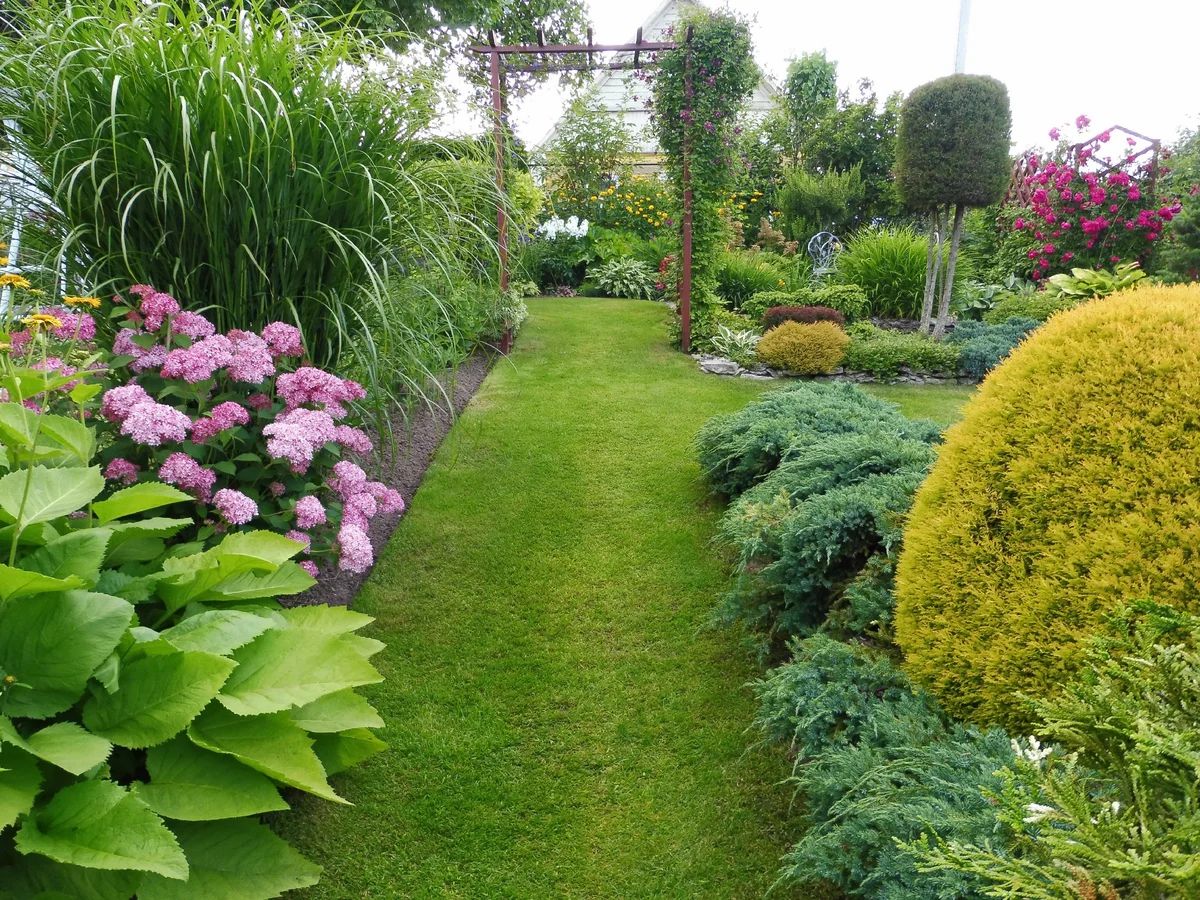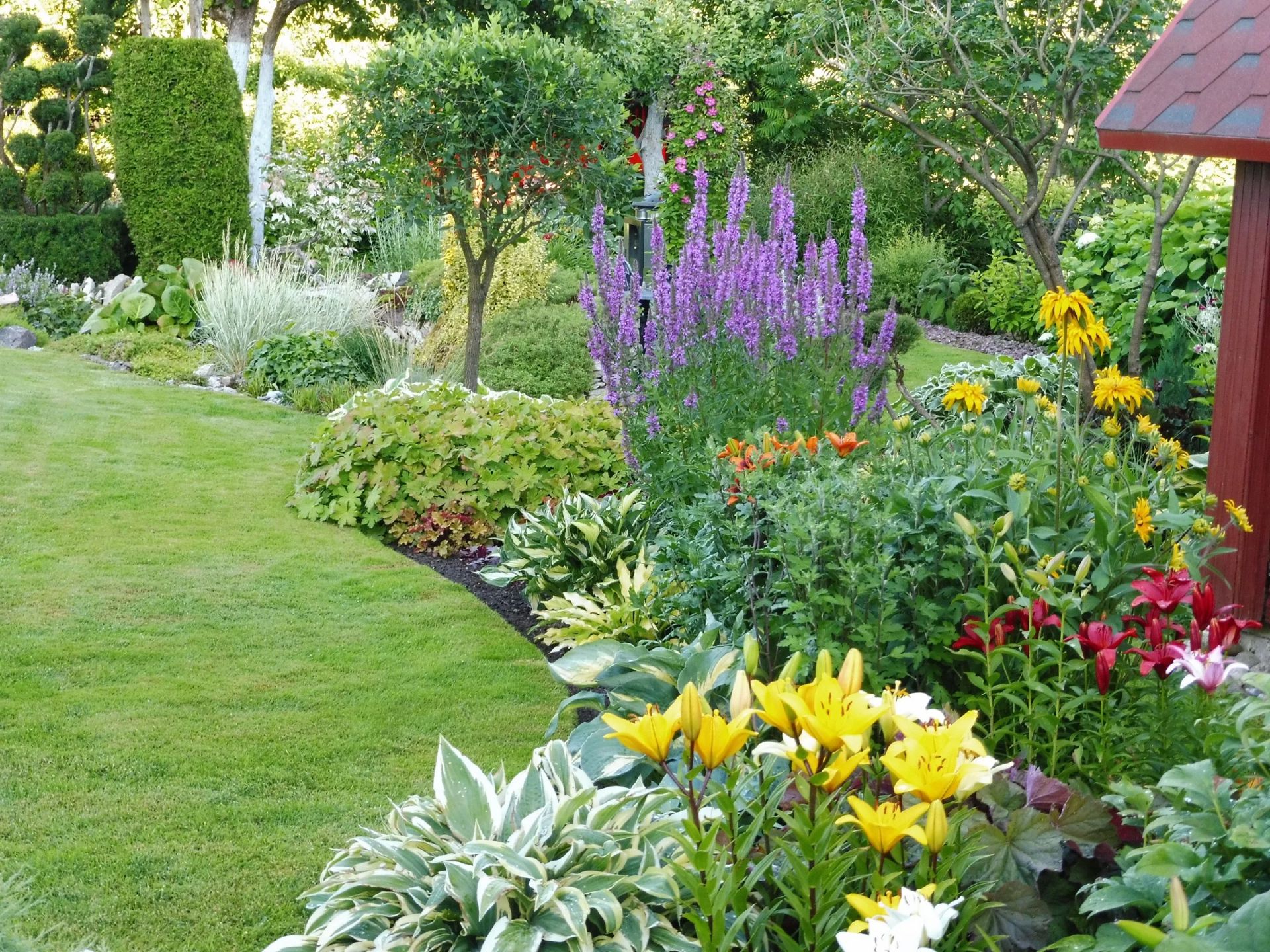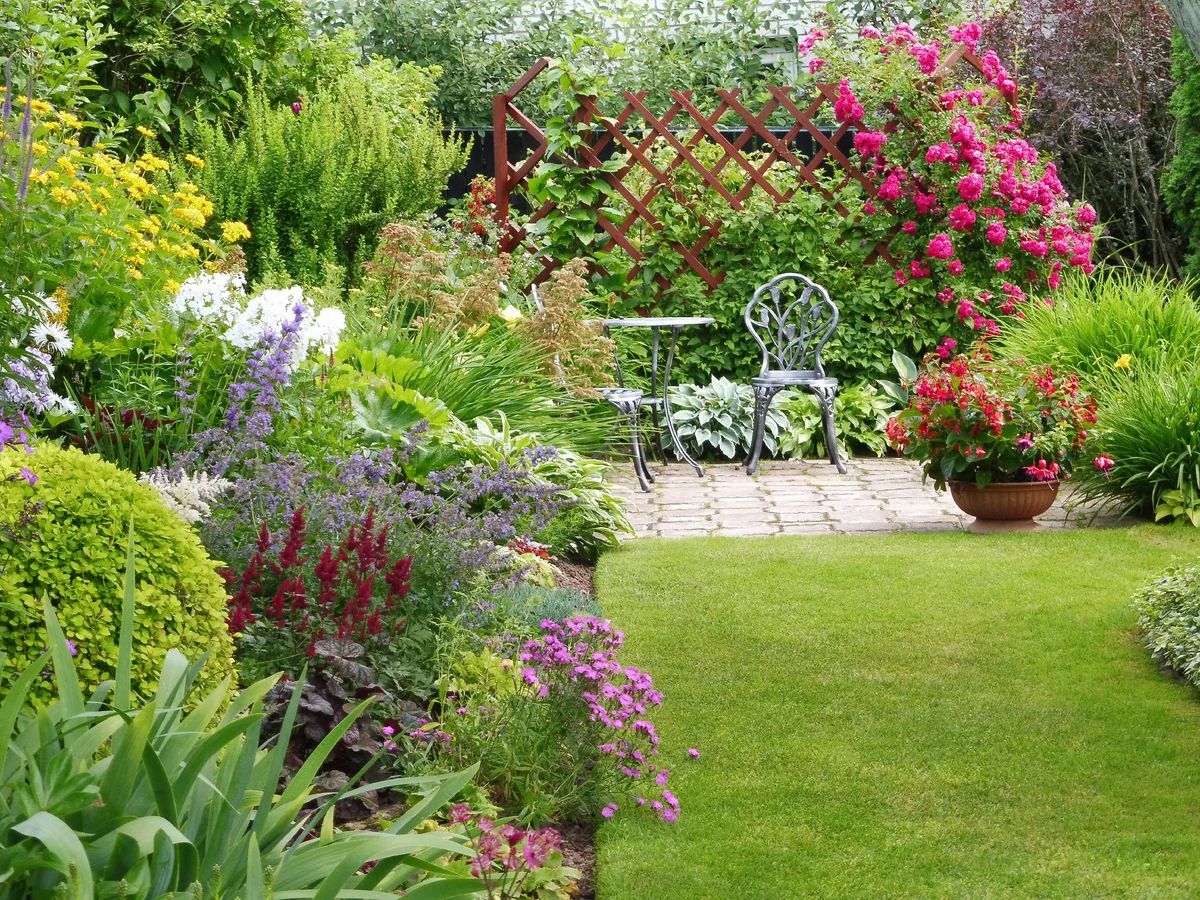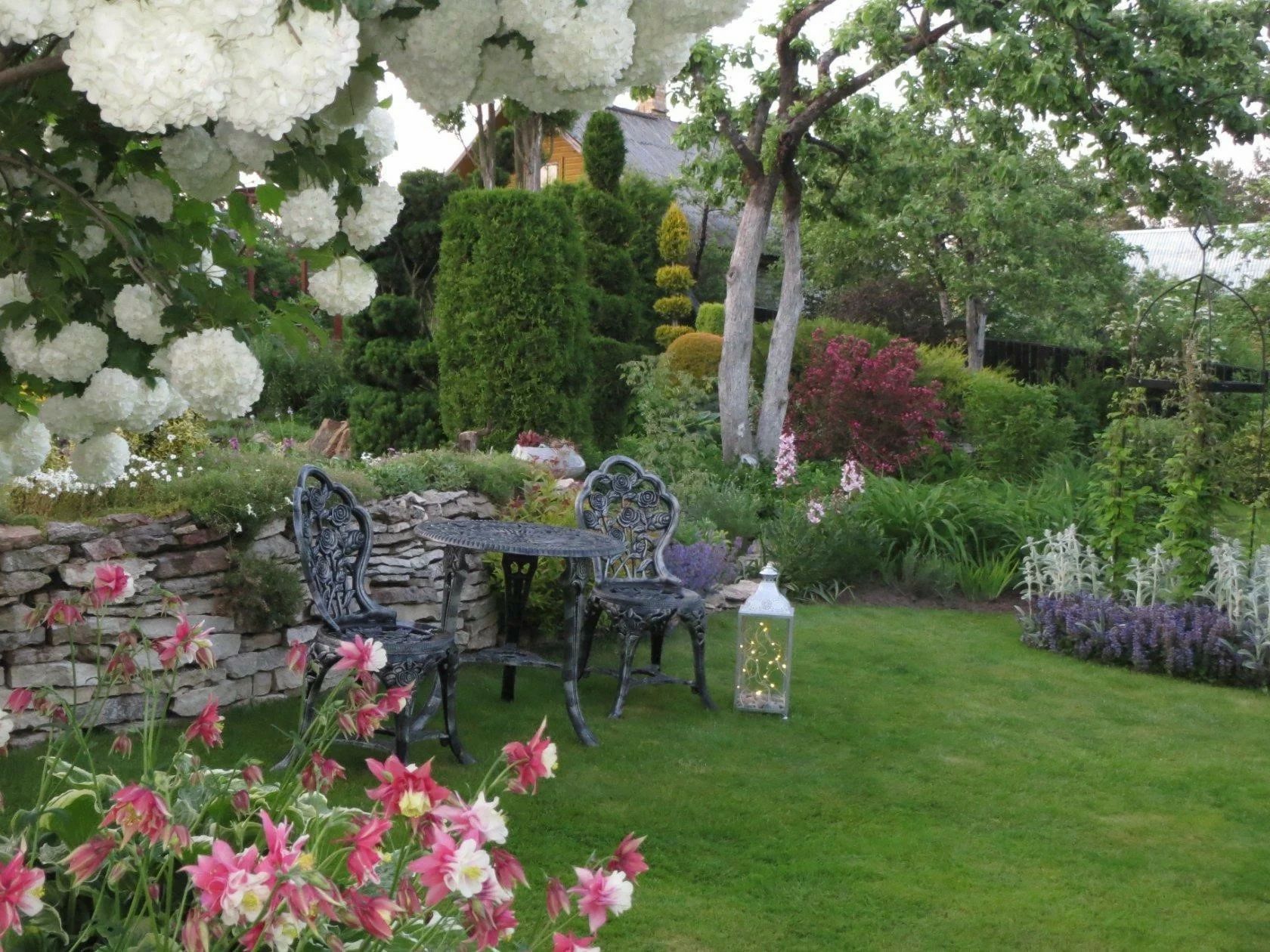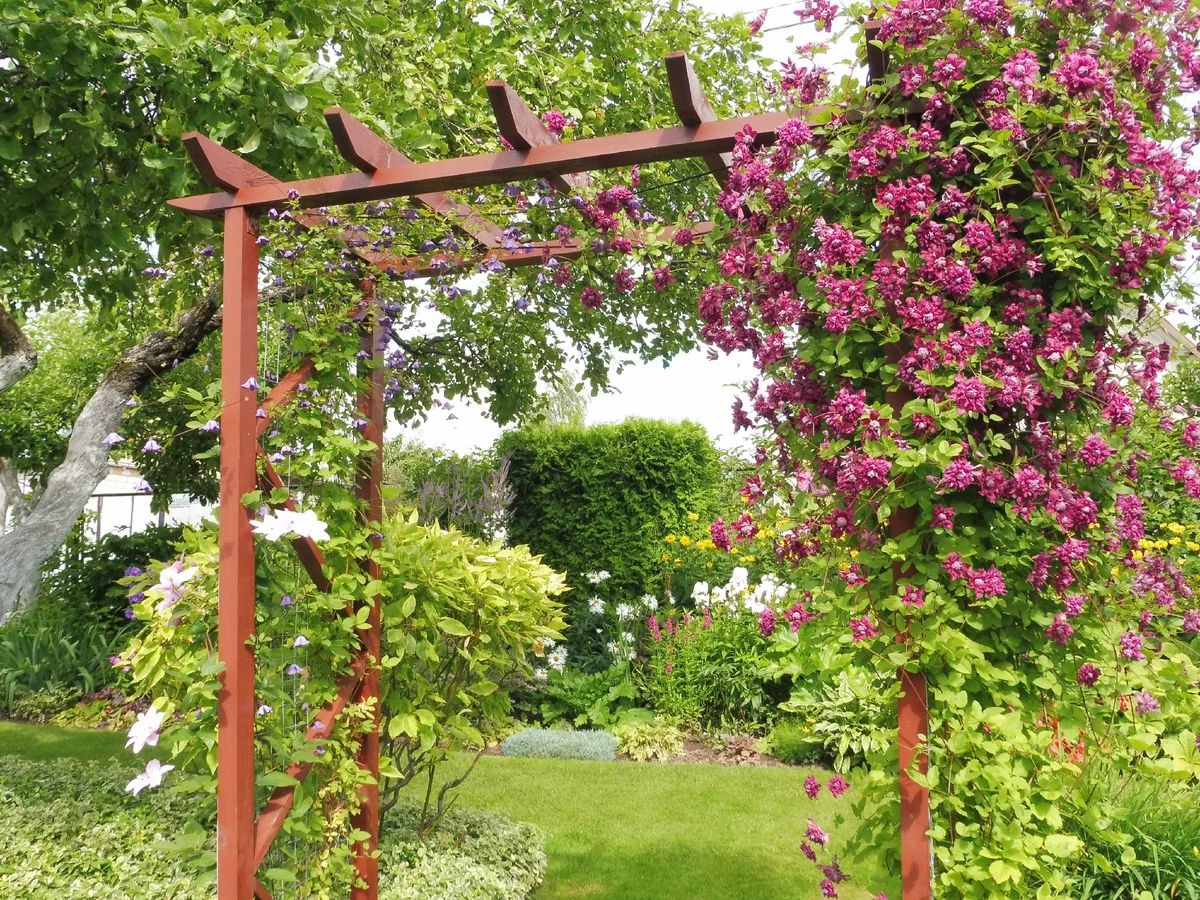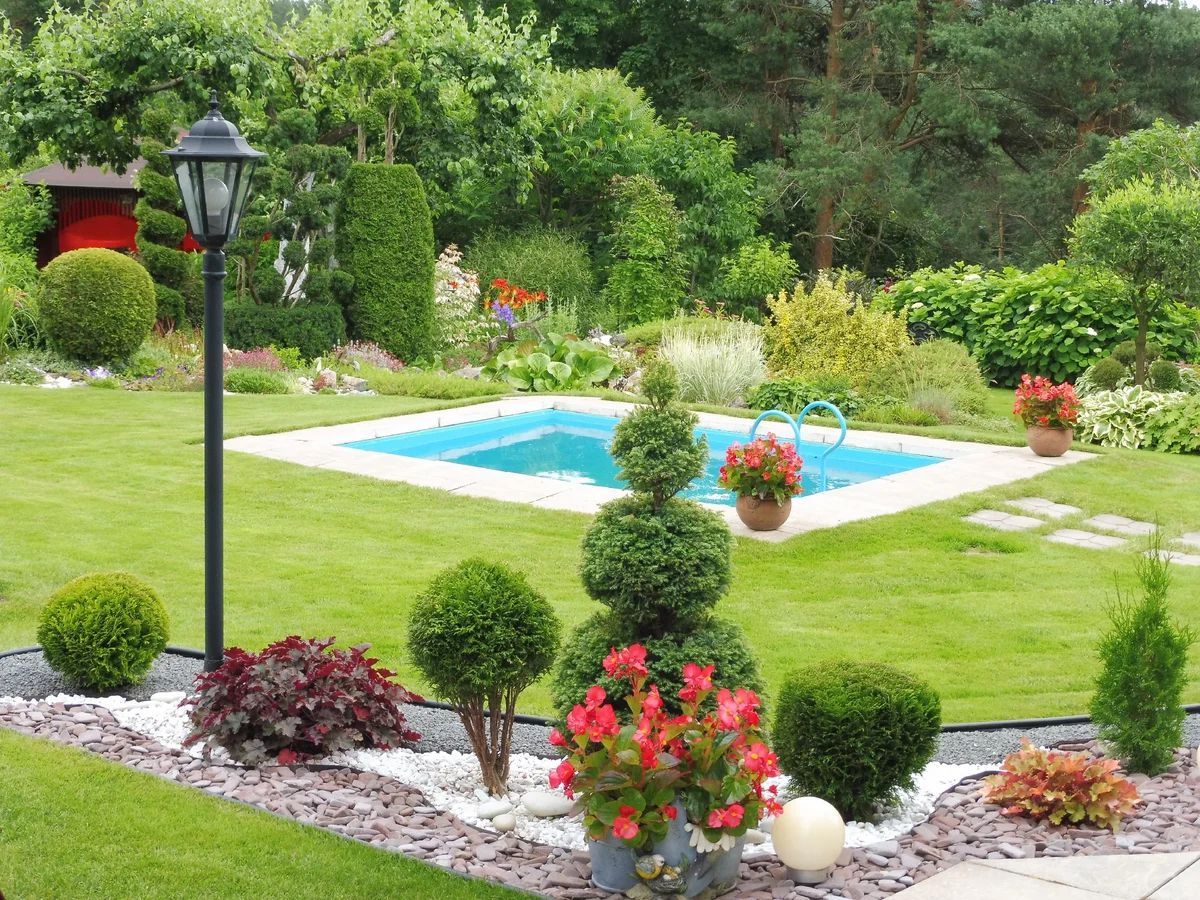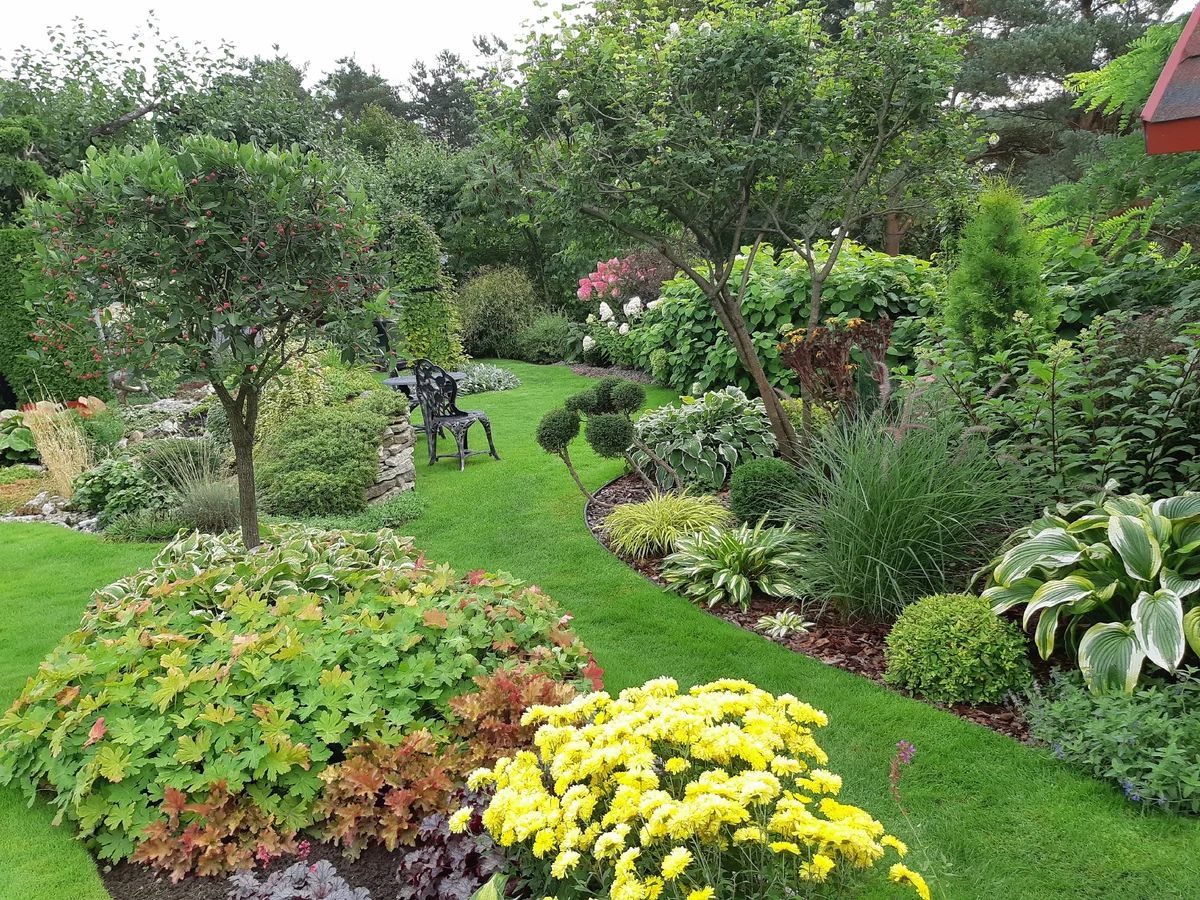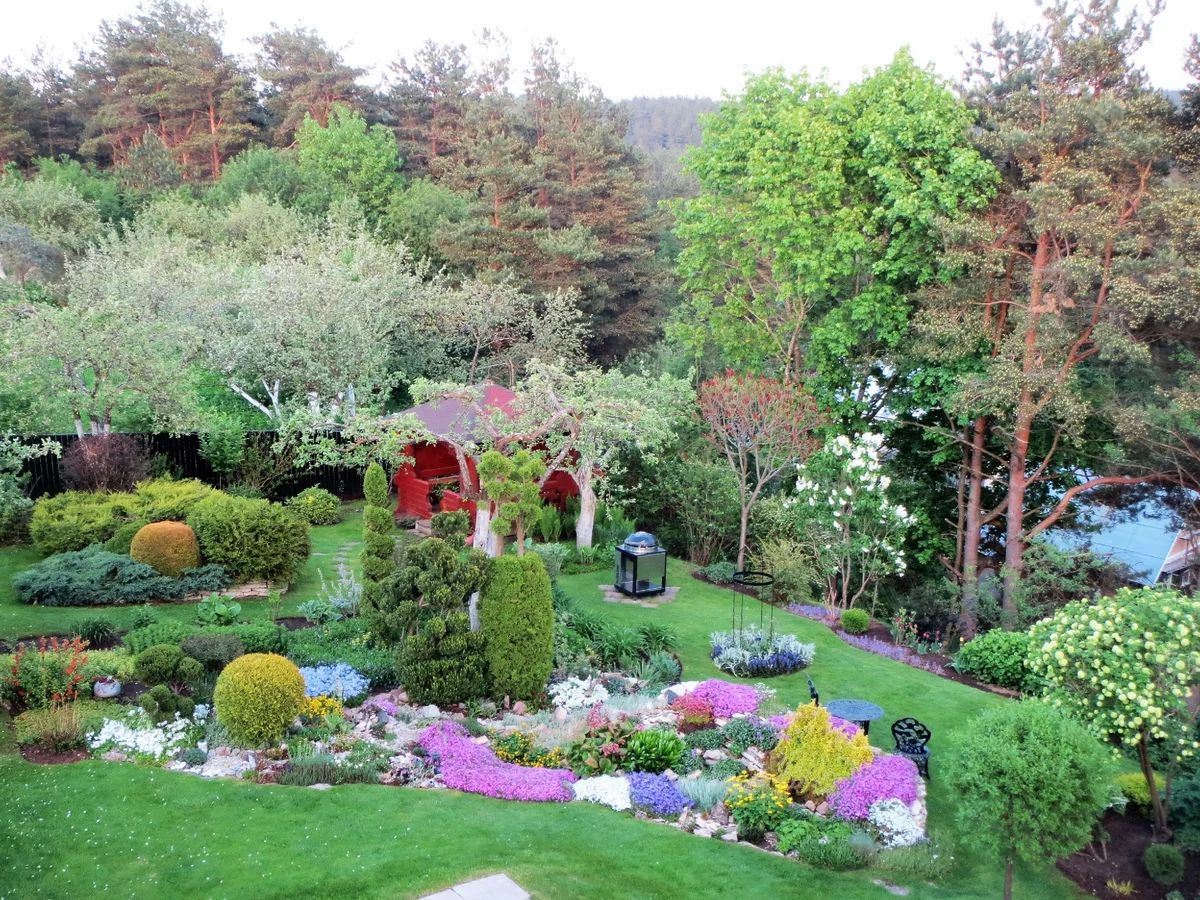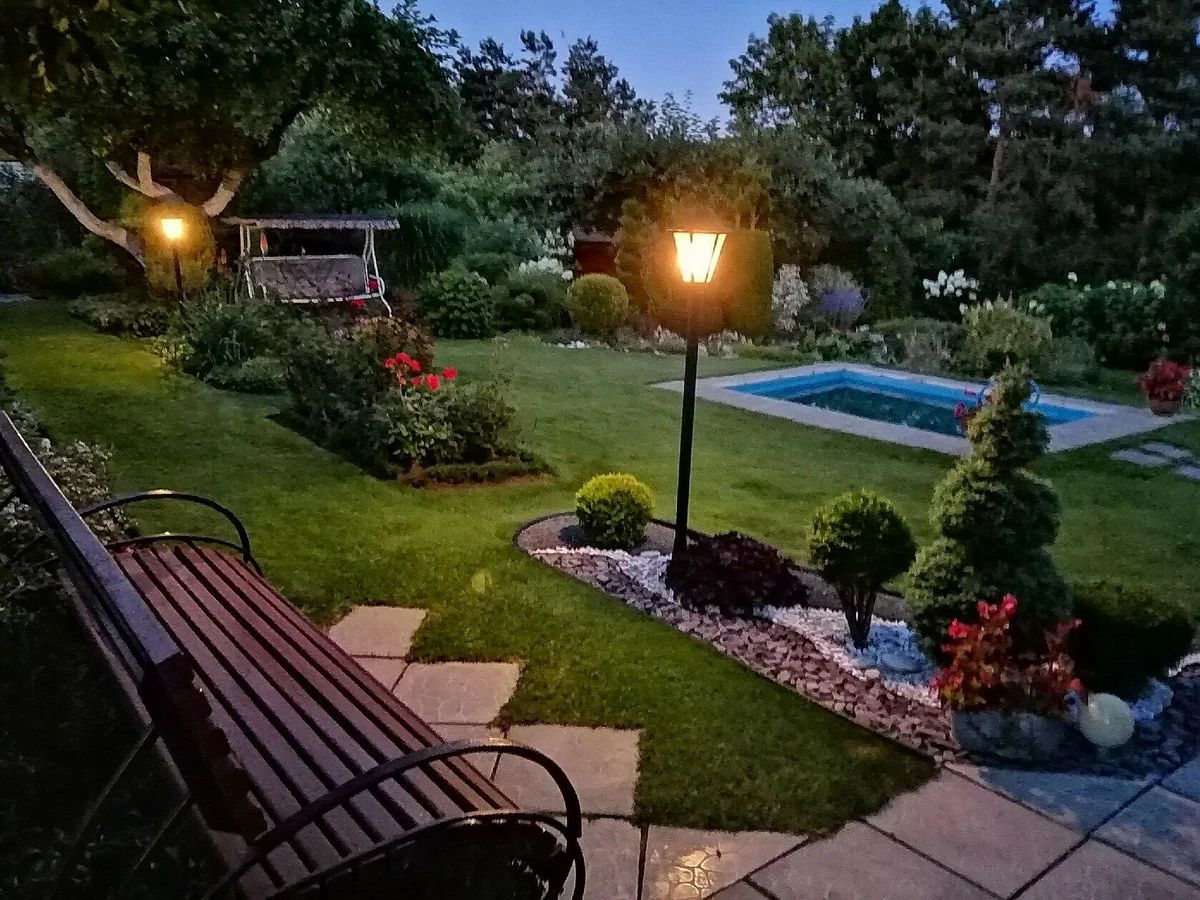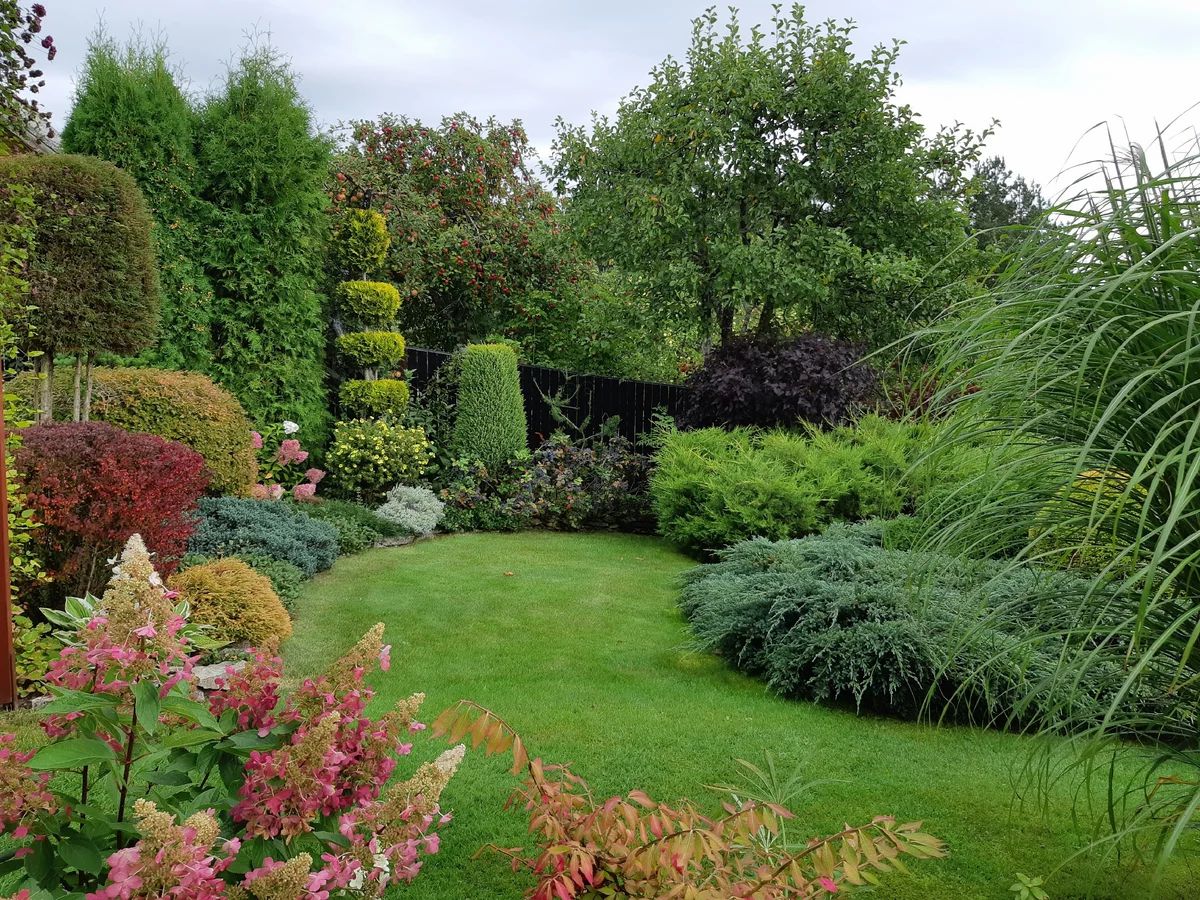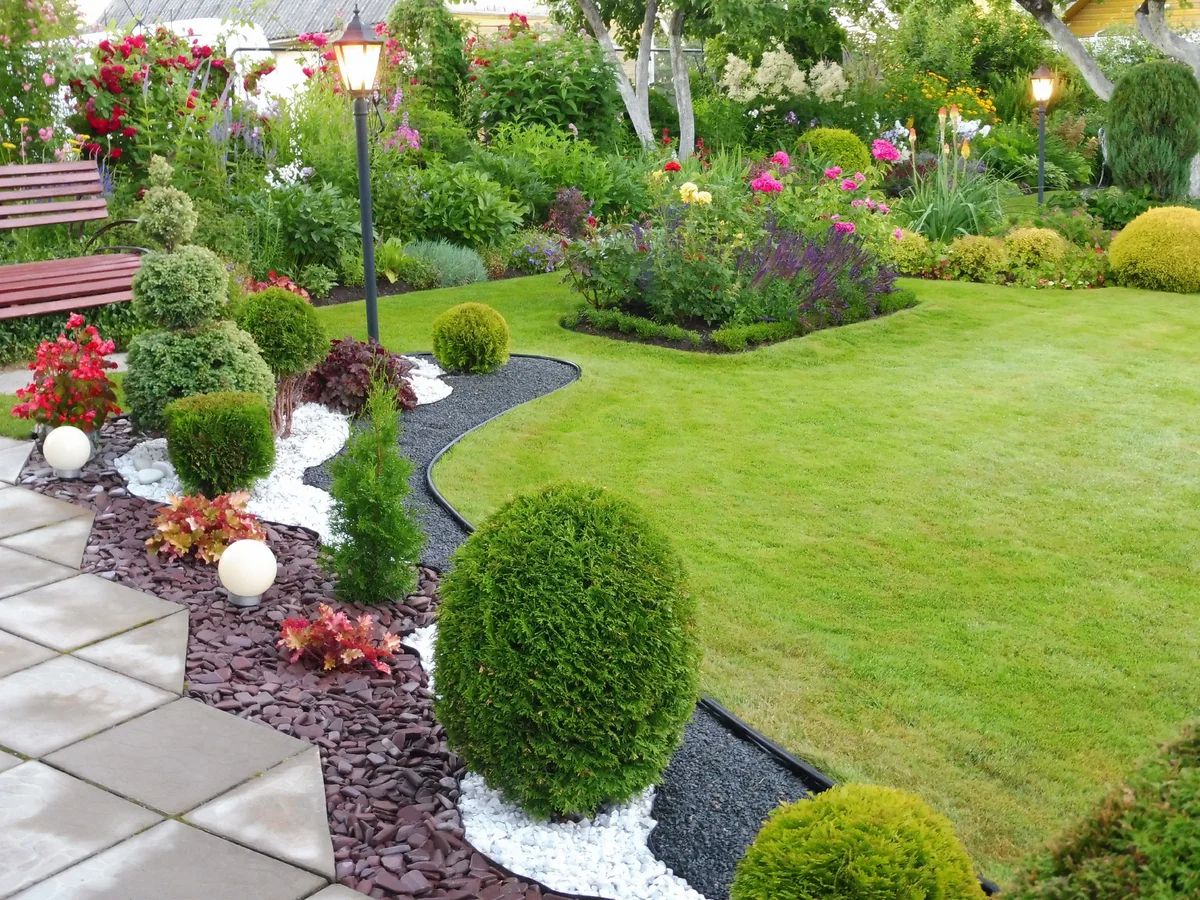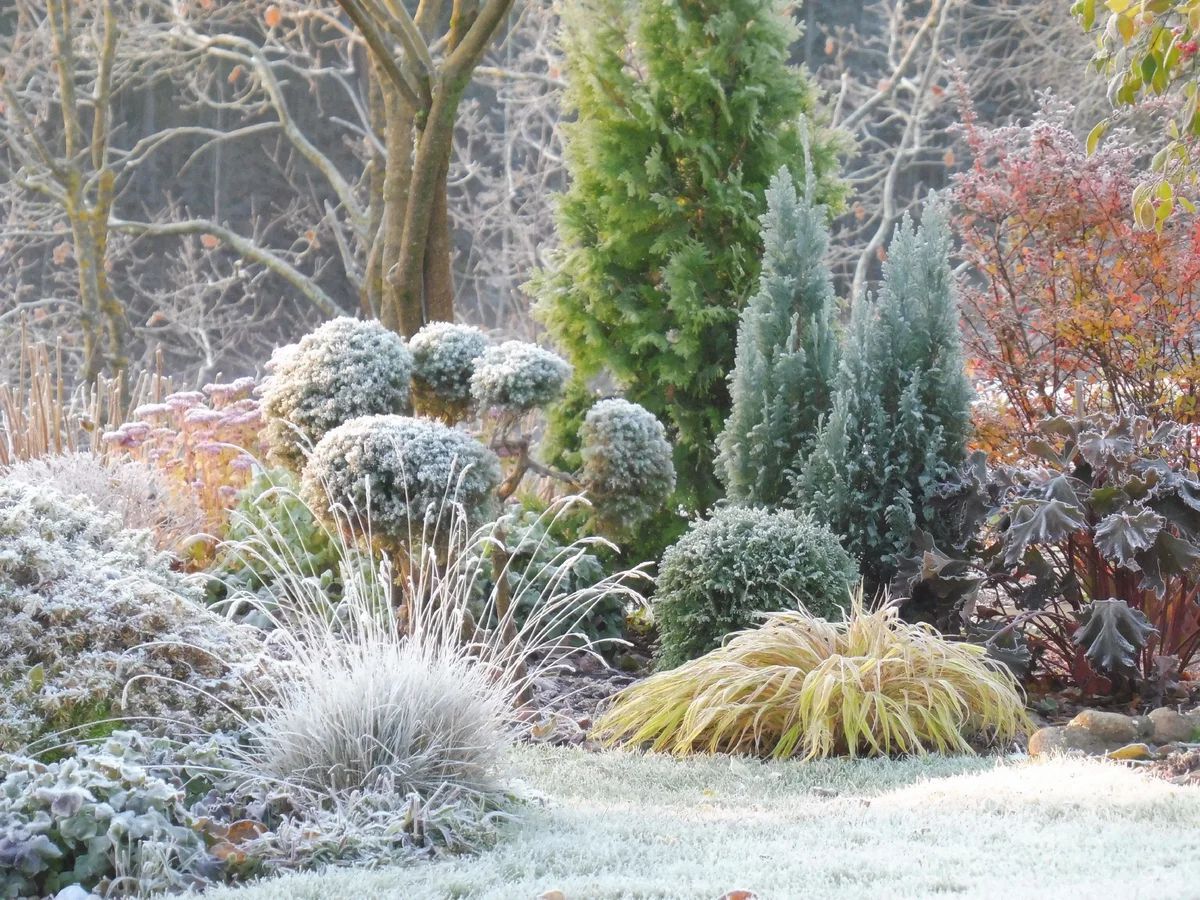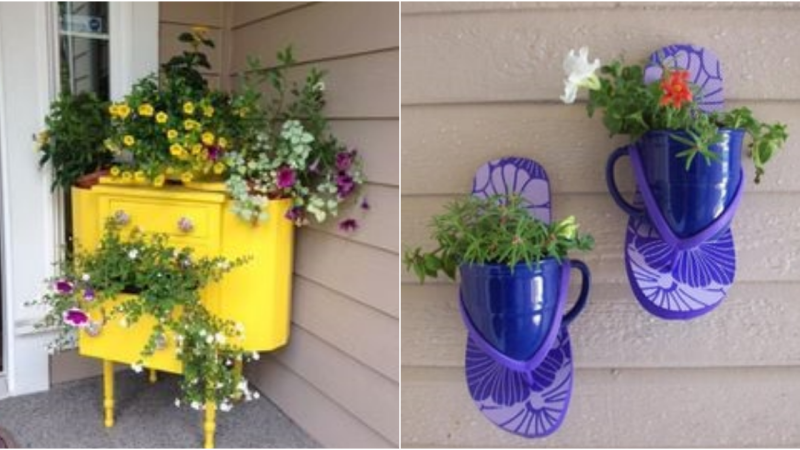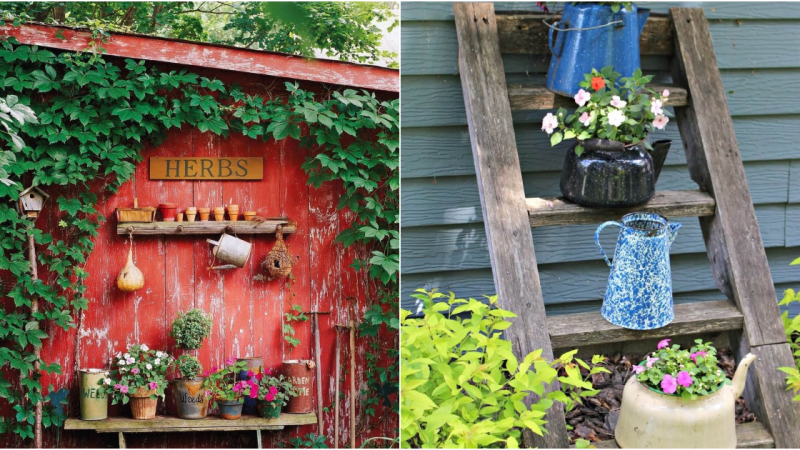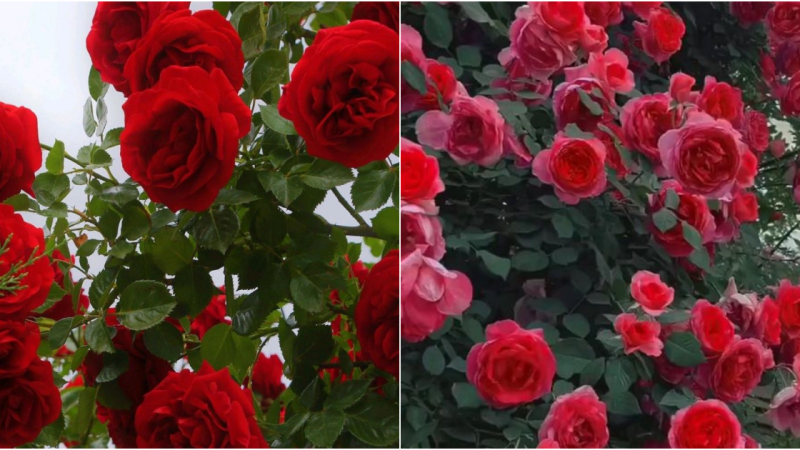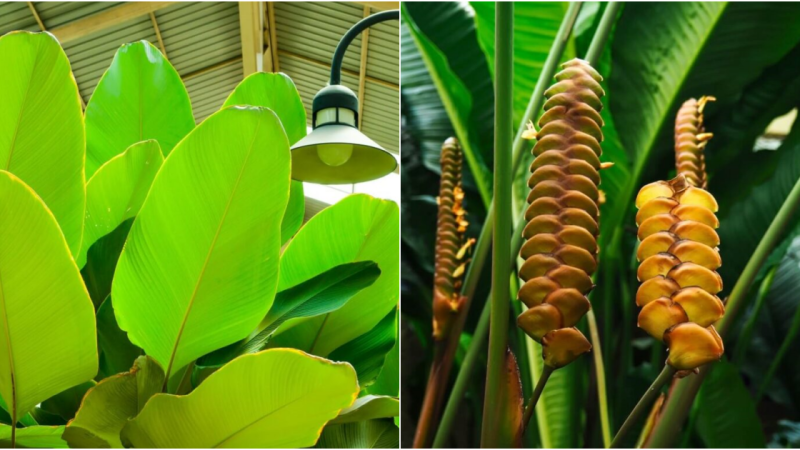Tamara Shpilina’s Beautiful Garden in the Pskov Region
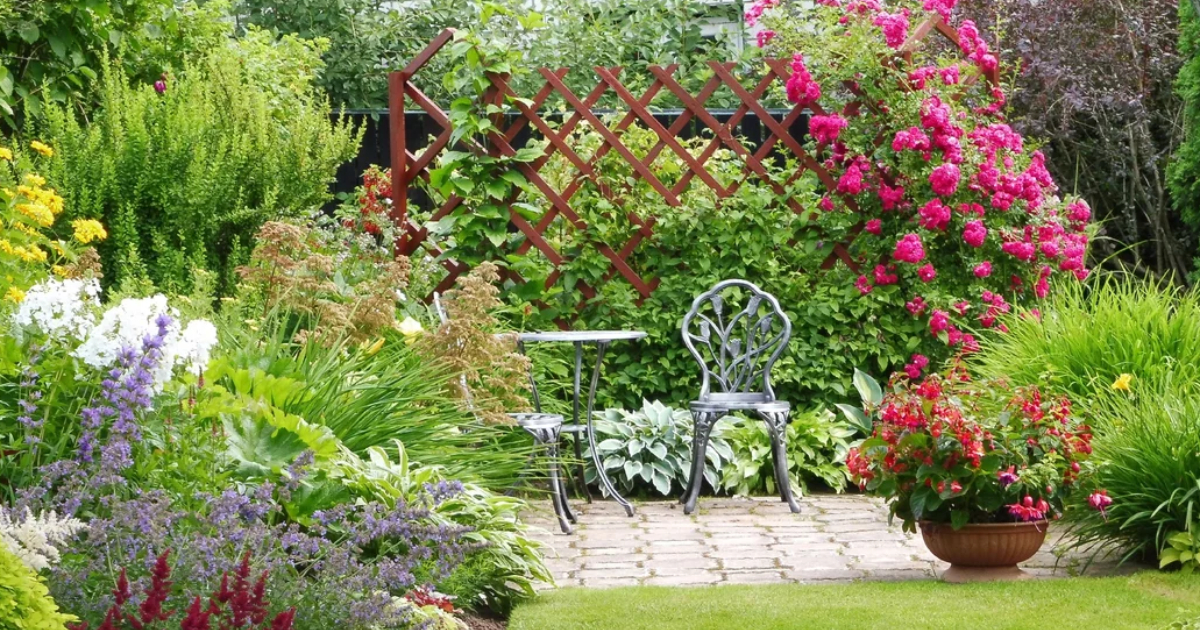
I came across Tamara Shpilina’s interesting article on growing the Clematis Purpurea Plena Elegans. The diverse flowerbeds caught my attention, and I asked the owner to tell me about her garden. Tamara agreed, and I am delighted to share her words.
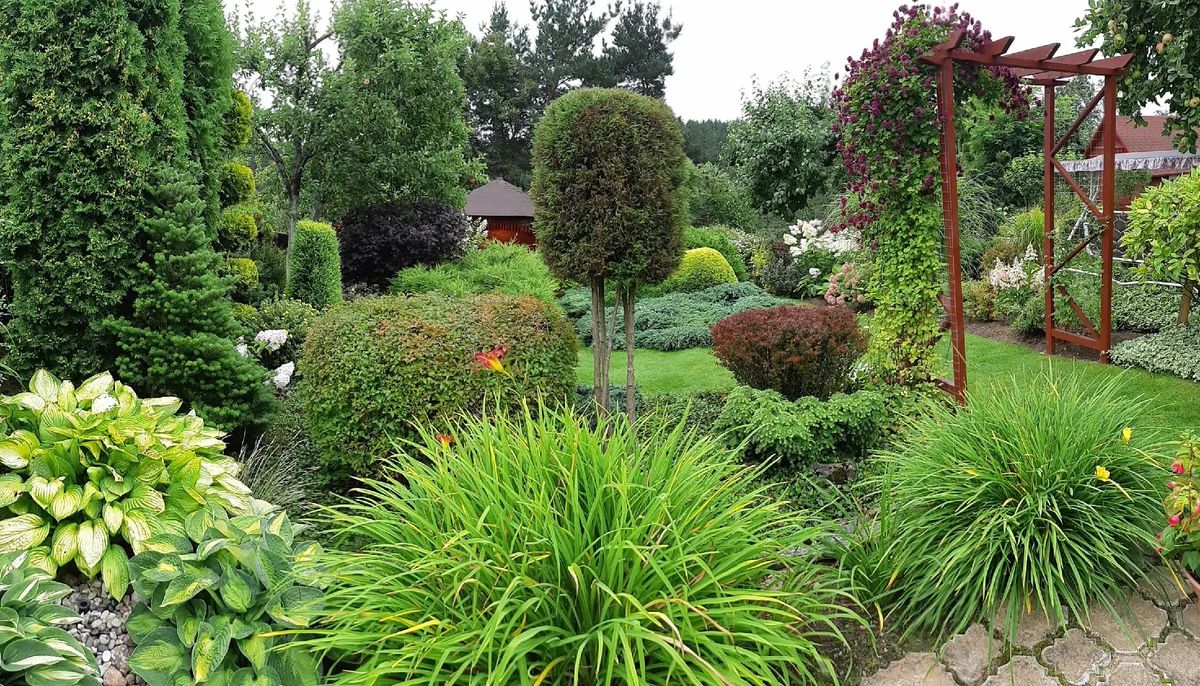
“Our garden is located in the small town of Pechory in the Pskov region, near the border with Estonia. This town is famous for the Holy Dormition Pskovo-Pechersky Monastery. Our garden has been around for 21 years. We inherited a plot of land measuring 12 acres, which had a few old apple trees and a vegetable garden.
Initially, we also focused on gardening, mainly planting vegetables. However, at that time, the first flowerbed with flowers appeared. Even during the difficult years of the 1990s, I couldn’t resist the pleasure of planting my favorite flowers—various-colored phloxes. That’s how it all began… Also, in 1999, I happened to come across the magazine ‘My Beautiful Garden.’ After that, I had many ideas on how to transform my garden.
First and foremost, I decided to combine the fruit garden with a decorative one since it was impossible to transplant the old apple trees, and it would be a shame to lose them. We had to remove many lower branches of the apple trees, which created a large flower bed measuring 12 by 2.5 meters, where various perennials were planted.
Along the fence, we planted thuja, roses, bladder senna, veronicastrum, bistort, heliopsis, and in the center of the flowerbed, there are phloxes, followed by peonies, astilbes, veronicas, asters, liatris, echinacea, irises, and various types of sage. Primroses, geums, tiarellas, and carnations grow in the foreground. This flowerbed is adjacent to a relaxation area with a mini fountain.
There are a total of five different places in the garden where you can sit and relax. Additionally, there is a gazebo in the depths of the garden.
The roses do not require special care. Before the frost sets in, I bend the stems and cover them with arches, using burlap on top. In spring, I raise the roses, pruning the stems by one-third. In dry weather, I spray them with copper sulfate. During the budding period, I fertilize them with a complex fertilizer (azophoska), and in mid-August, I fertilize them with phosphorus-potassium or ‘Kemira Autumn.’
All my clematis plants belong to the third pruning group and hardly need any covering. In autumn, I cut the shoots 10 cm from the ground and place these cut shoots on the root zone of the clematis for winter. I fertilize them in the same way as the roses.
In the center of the plot, where there used to be a potato field, we built a small pool. It is made of metal (5 mm thick sheets). Its size is 2 by 3 meters, with a depth of 1.4 meters, narrowing at the bottom. Taking care of it involves painting it with universal PF enamel after a year. We don’t drain the water during winter; instead, we pump it out under the apple trees in spring. To purify the water, we add hydrogen peroxide (purchased in bulk from a specialized store). If the summer is excessively hot, we occasionally change the water. Our pool, like our garden, is now 21 years old.
The pool and flowerbeds are surrounded by a lawn. I dig a shallow trench about 10 cm deep along the lawn’s edge with a spade. For aesthetic purposes, I trim the edge of the lawn with regular scissors, repeating this process three times a month.
That was just the beginning. Since the plot has a natural slope, we created a rocky garden and a small pond with a water lily using the excavated soil and stones from when we built the pool. New compositions and flowerbeds with deciduous and coniferous shrubs and perennial flowers started appearing around this core of the garden.
The garden is a part of our lives, and we wanted it to look beautiful and cozy not only during the day but also at night. We installed permanent lighting along the paths.
I started trimming the evergreen plants out of necessity as the crowns of the emerald arborvitae, yew, and junipers began to exceed their designated spaces. With the help of pruning, the garden acquired a new appearance. I trim the shrubs into balls by eye—it comes naturally with experience. After three years, beautiful shapes are formed.
The tools I use for topiary trimming are pruning shears and battery-powered scissors. I trim them once a season in August, considering the weather, making sure it’s not too hot. After trimming, I water the plants thoroughly at the roots and spray them with the ‘Circon’ preparation.
I thank Tamara Shpilina for her interesting story and beautiful photographs.”

